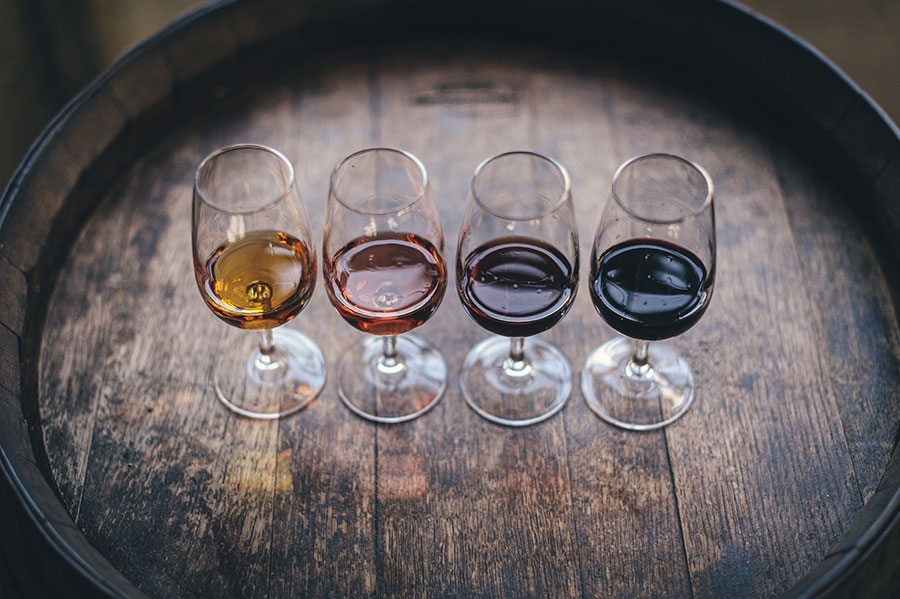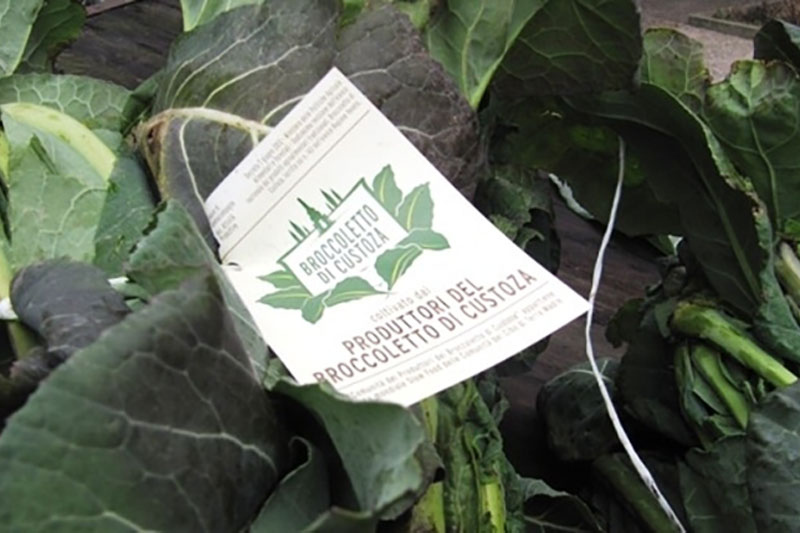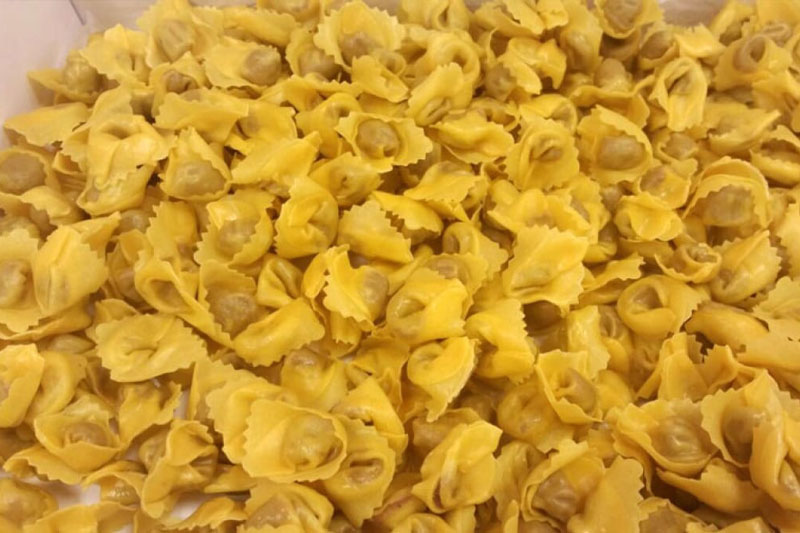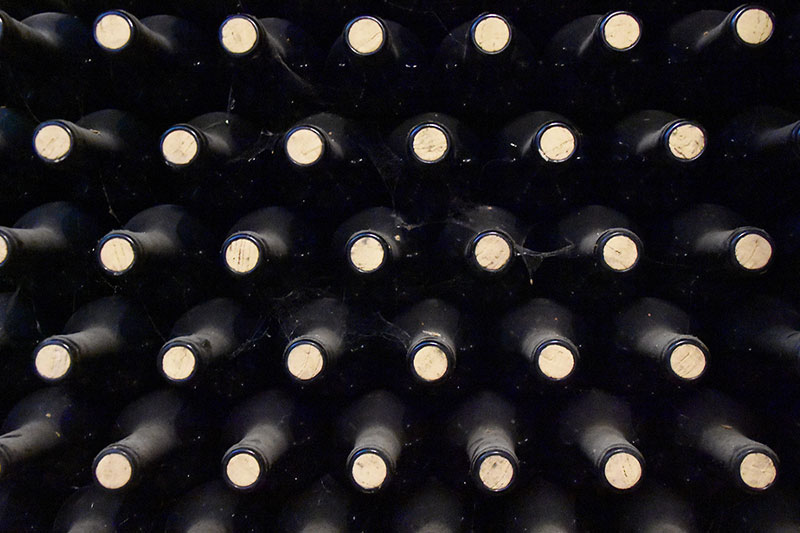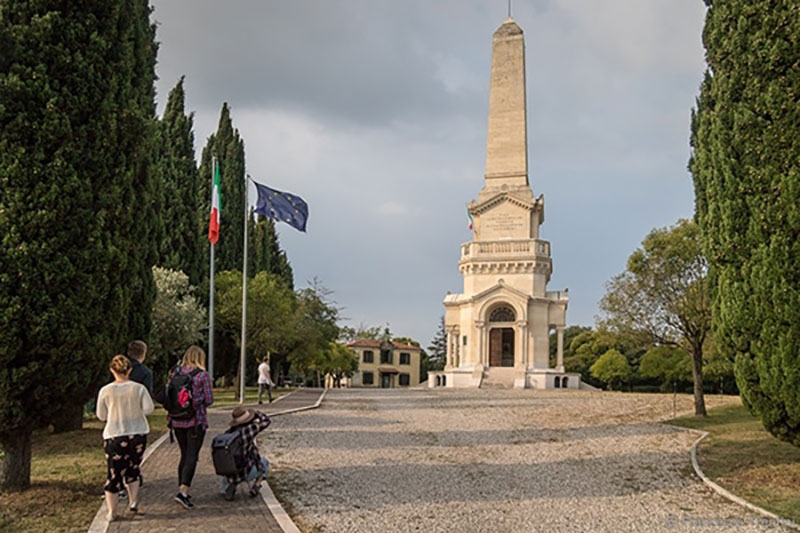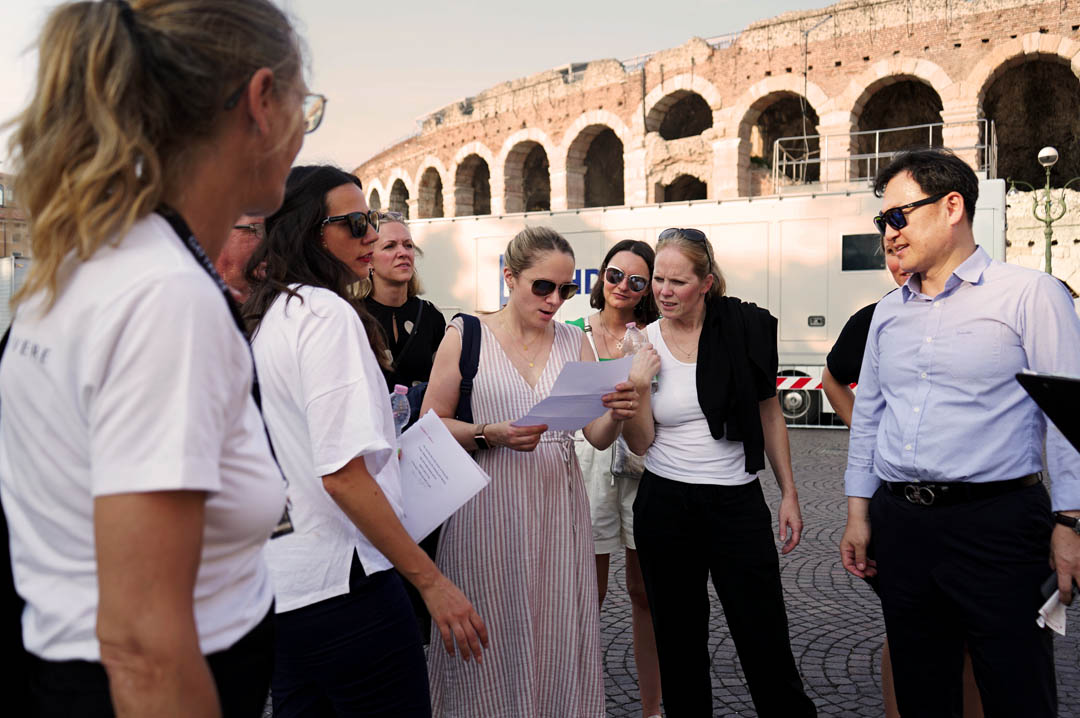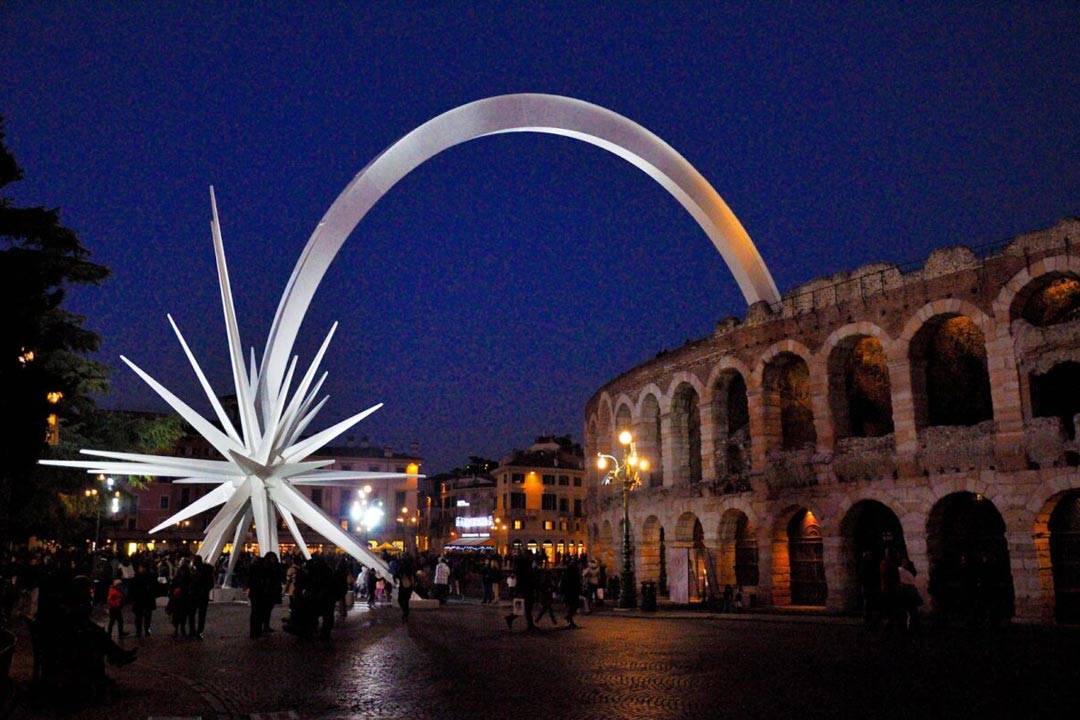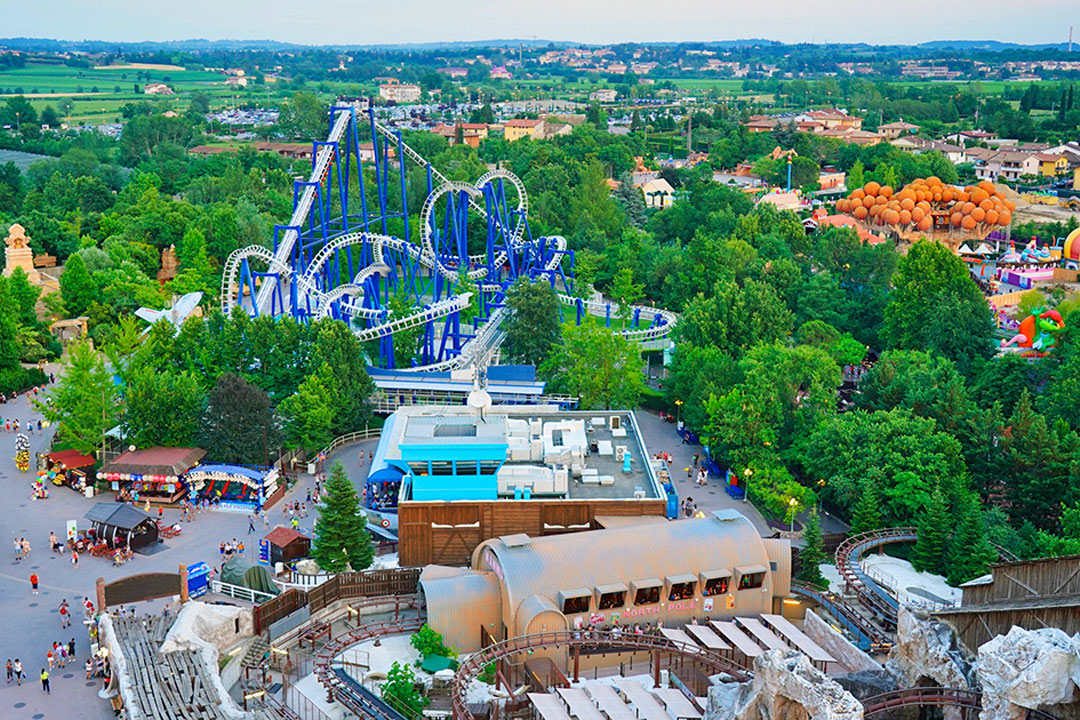Terre del Custoza is a territory located on the morainic hills south-east of Lake Garda and includes the Municipalities of Sommacampagna, Valeggio sul Mincio, Villafranca di Verona, Bussolengo and Sona. These areas with a high wine-growing vocation are all united by the cultivation of the typical vines for the production of Custoza wine: the native Corvina, the Chardonnay, white berried, and finally the Cabernet.
This is a very rich territory from a food and wine point of view: in addition to naturally the Custoza D.O.C, a fresh and slightly aromatic wine, we find in fact numerous typical products, ranging from fruit and vegetable raw materials to specialties and dishes cooked in a traditional way.
Local Products
Broccoletto di Custoza
Belonging to the Brassicaceae family, or Cruciferae, Broccoletto di Custoza it begins to be harvested in early December, and then in January becomes the protagonist of numerous gastronomic initiatives of the restaurateurs in the area who manage to recreate truly surprising menus from appetizers to desserts.
Tortellini di Valeggio
The most famous love knot in Italy. The dough is thin while the filling is made up of braised white meat. The best tortellini are naturally those made by hand and can be cooked or dried with melted butter and a sage leaf, or more typically, in broth with a handful of Grana Padano.
Sfogliatine di Villafranca
Sfogliatine is a recipe dating back to 1870.
This sweet centenary with a typical donut shape is a specialty of the Villafranca area known by many illustrious authors such as Berto Barbarani, Renato Simoni and Gabriele D’Annunzio who celebrate its sweet taste in numerous poetic compositions.
Custoza DOC Wine
The particular richness of the soils has enjoyed the pleasant freshness of Custoza wine, whose peculiarity is to be a cuvée, that is a mixture of different wines, with fruity and floral aromas. Custoza is excellent as an aperitif and in combination with delicatessen, first courses, cheeses and delicately cooked vegetables.
The Morainic hills territory
The village of Custoza is located on the most Southern edge of hills shaped by moraine formation that represents the utmost Southern advancement of the glacier. The hills between 100 and 170 meters high, far from being rough, create a wavy and round landscape stretching from East to West, the main summits being the Mount Belvedere, Ossario, Bellavista, Mount Torre and Ca del Sale. The hilly precint of Custoza is limited to the West by the subsidence of the river Tione therefore separating it from the hilly precint of Valeggio-Sona. In that framework one can find various settlements (farming communities and hamlets), whose origins date back to 1600-1700. Viability has been constantly ensured through roads that connect the neighboring towns of Villafranca, Valeggio, Sommacampagna and other communities and hamlets. The water resource (except from the river Tione) was supplied by wells water fountains and pools, fed through hilly groundwater aquifers. The present landscape is typified by an intensive presence of large tracts of vineyards, whereas during the Independence wars there were small cultivated parcells, wheat, vineyards and grassland bordered by hedges and rows of mulberry trees used in the cultivation of silkworms.
The Custoza Museum
In the early 1870’s, Don Gaetano Pivatelli (1832-1900) a kind parish priest from Custoza, came up with and promoted the idea of preserving the remain of the fallen soldiers in a dedicated monument-ossuary. The Idea was accepted and in 1875, in Verona, a formal committee was estabilished, presided over by Giulio Camuzzoni (1816-1897) mayor of the city. The high impact submission of architect Giacomo Franco (1818-1895) was chosen, from among more than eighty submitted, to raise an ossuary on the hill of Custoza’s Belvedere. In the meantime, Count Carlo Gazola (1840-1911), a hardened veteran of the battle of Custoza on June 24th 1866, took upn himself the arduous task of exhuming the remains of the fallen soldiers from small cemeteries around the area. The project was financed by a national public contribution and the construction was completed within one year. At the beginning of June 1879, Gazola was able to finally transfer 1900 skeletons to the crypt without regard to rank, race, or nationality. The skeletons of the fallen heroes will thus stand for visitors as a secular reminder of a lost generation of brave European soldiers. ‘Enemies in life / In death reconciled / By compassion gathered’ reads a plaque in the Ossuary chapel.
The Ossuary of Custoza was inaugurated on June 24th 1879. The King of Italy Umberto I was represented by his brother, Amedeo d’Aosta, who himself had taken part in the battle thirteenyears earlier. There were many veterans among the guests including an Austrian military delegation. The Northern Railway Company ran special direct trains from Verona and Mantua to Villafranca. Then from the Villafranca train station seventy horse-drawn carriages, arranged by the president of the organizing committee, Giulio Camuzzoni, were provided to take the guests and the delegations to Custoza and onto the ceremonial site. The ceremony started around 10.30 am. After a mass celebrated in the monument chapel, designated speakers took the podium. Among them, representing the War Minister was Salvatore Pianell, Unit Commander General in 1866 Custoza battle, who solemnly proclaimed the Ossuary ‘a shrine consecrated to compassion and sacrifice’. After which the guests guided by Carlo Gazola, went to the crypt he had set up only two weeks earlier.
Battle of Custoza
On the 24th June 1866, up on the Moreinic hills surrounding the southern shore of Lake Garda the Armies of the Kingdom of Italy and Austrian Empire face each other. The battle flares up and each party manages to conquer hill slope; contend for a bridge on the Mincio river bombing, loading, defending oneself, while the day goes on the heat becomes unbearable. The Austrians move forwards skillfully while the opposite front the tenacity of the troops and the tactics of their officers allow them to achieve targets that reveal themselves to be crucial. Howerever mistakes of evaluation and internal conflicts of the supreme commanders of the Italian Army will prevail, forcing the troops to abandon the town of Custoza where the battle comes to an end. This major event of the Italian Risorgimento, far from having a real impact (a few months later Austria will hand Veneto over to France who will give it to Italy later), the defeat of Custoza will cast a shadow on the years to follow and will become a psichological burden to generation of Italians.
